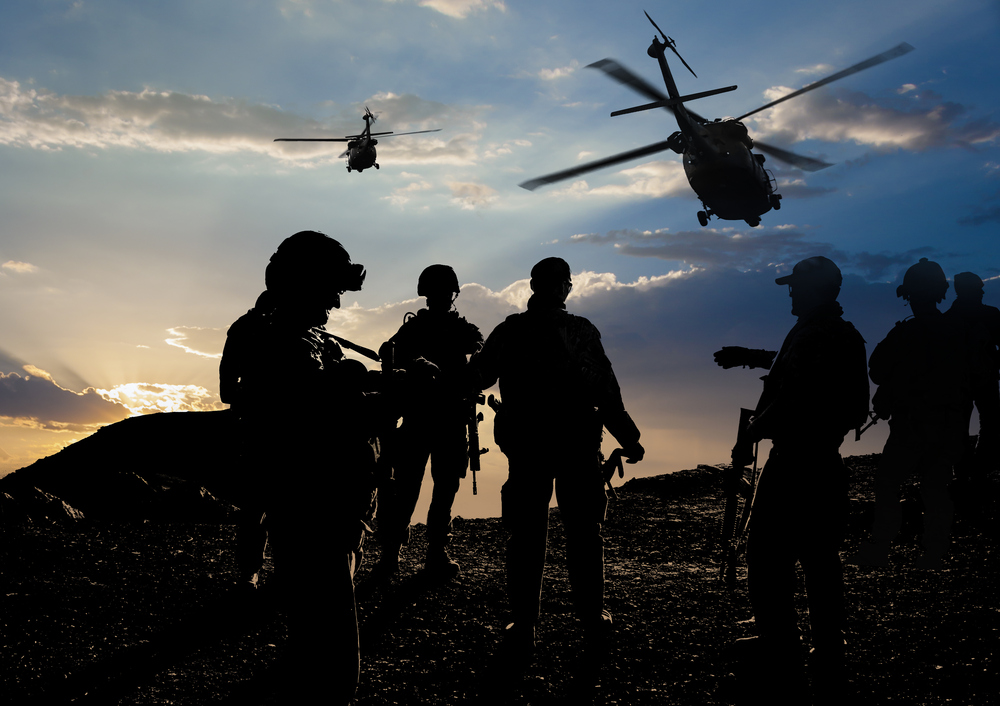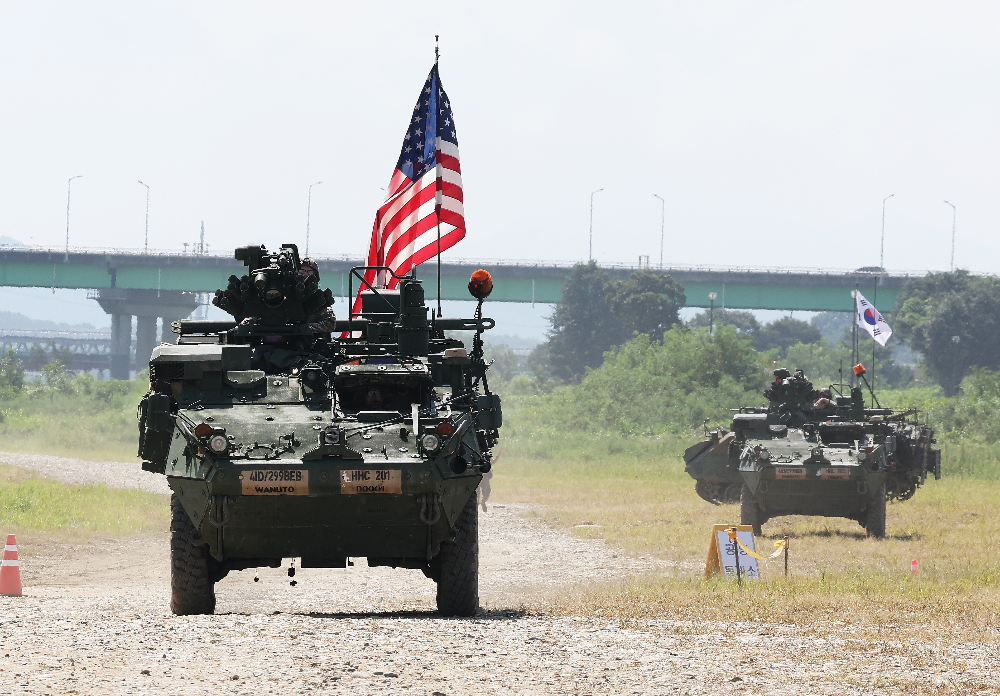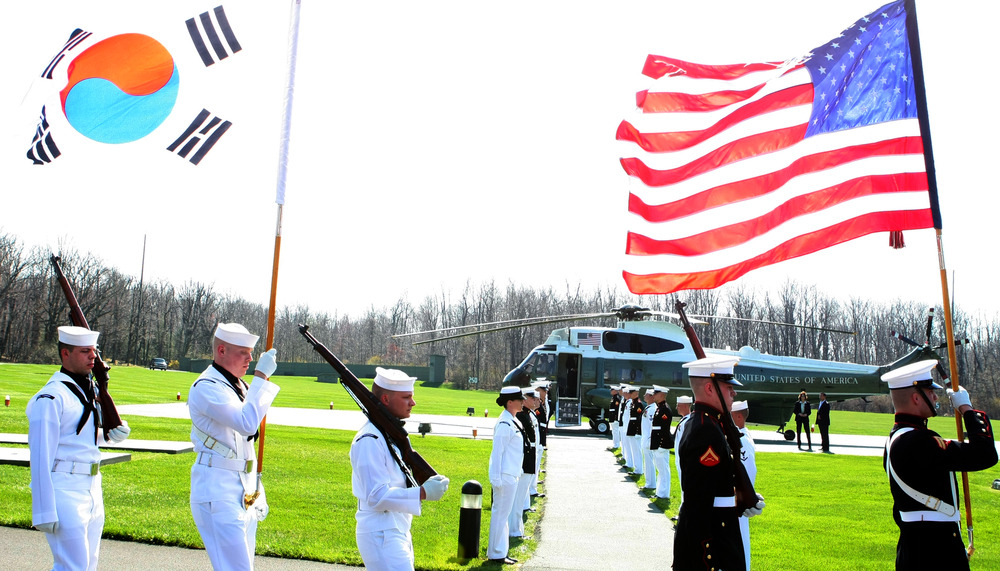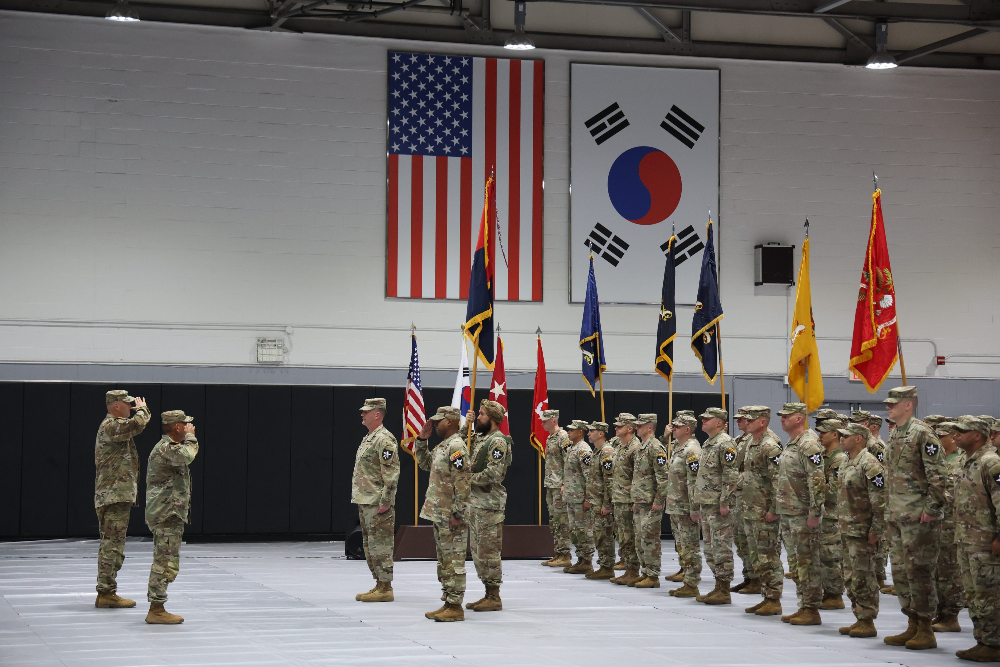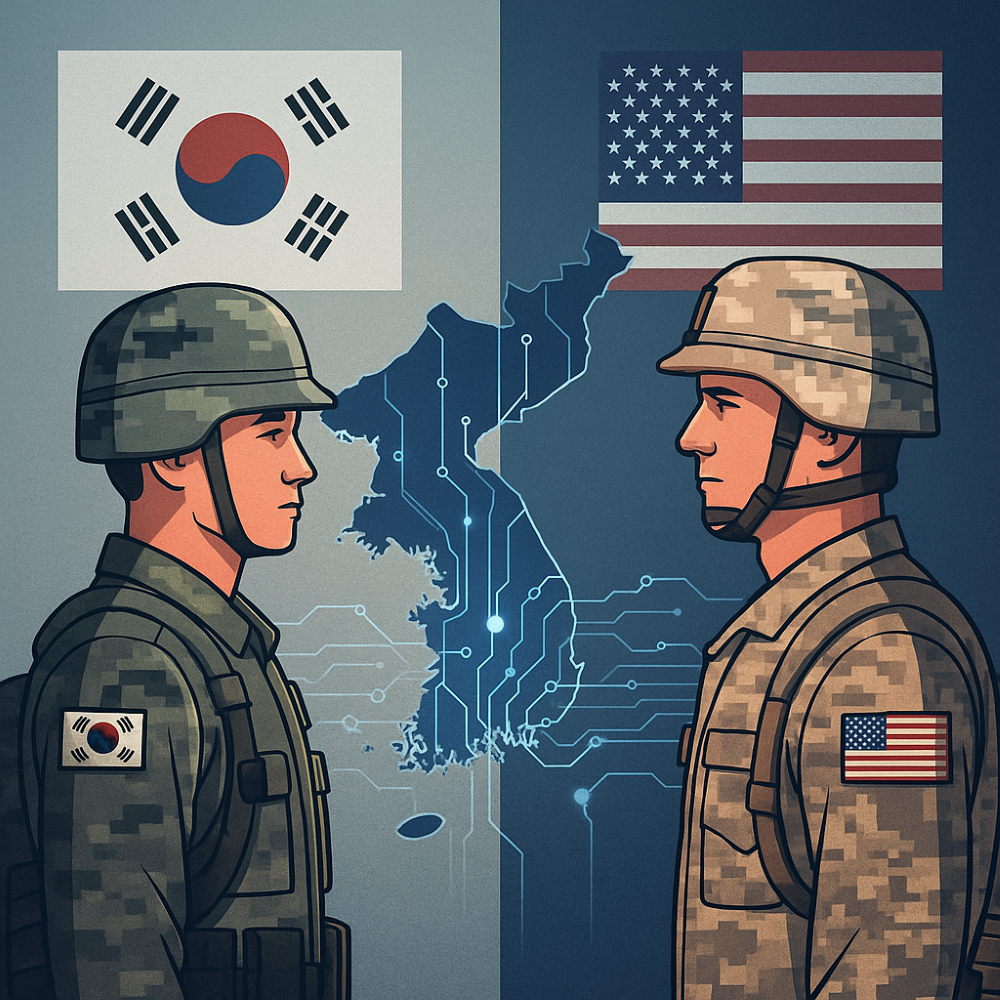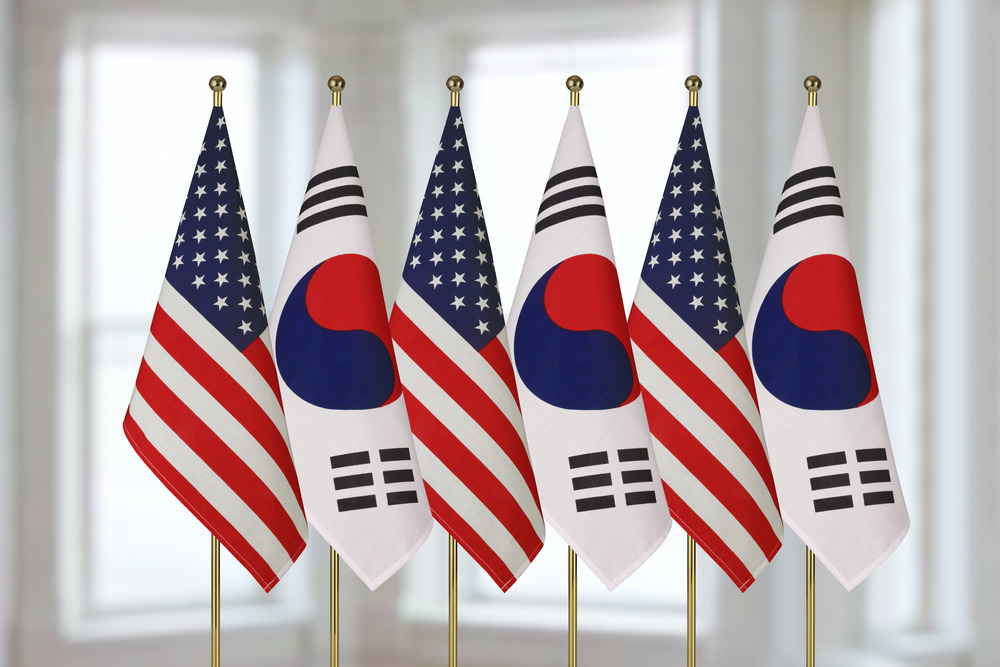- #Security & Defense
- #US-ROK Alliance

Key Takeaways:
- the strategic flexibility exercised in South Korea is not akin to the ‘shock therapy’ applied to European allies to induce greater burden-sharing; rather, it is a form of greater risk-sharing.
- certain defensive capabilities of USFK that serve dual purposes for both China-related and North Korea-related contingencies could be strengthened ahead of offensive assets.
- the ROK could support the U.S. regional role through burden-sharing mechanisms analogous to NATO’s Security Investment Program (NSIP)
How is the ROK-US alliance transitioning from strategic integration to strategic alignment amid evolving alliance dynamics? The alliance is not a federation, and this transition has been inherent from the beginning, as the two nations have always differed in their interests. Yet it is now unfolding more visibly as both sides search for a new equilibrium, shaped by competing discourses of strategic flexibility and strategic autonomy. Washington seeks to reorient the identity of U.S. Forces Korea (USFK) toward a broader regional role, while Seoul strives to regain wartime operational control (OPCON). Although both parties aim to avoid strategic disintegration, they have not yet settled on a new balance.
Strategic Flexibility in Retrospect
The United States’ pursuit of strategic flexibility is nothing new. If defined as the ability to adjust strategic behavior, plans, or organizational structures in response to new circumstances, the U.S. military has never removed it from its playbook since the Second World War. The concept of strategic flexibility has resurfaced officially whenever Washington has faced a shifting security environment requiring adaptation – after the Korean War in late 1953, during the onset of Vietnamization in 1970, following the end of the Cold War and the First Gulf War in 1993, and with the launch of the Global War on Terror in 2004.
Although the concept of strategic flexibility is not necessarily linked to the number of USFK personnel – since a surge could equally occur under the same principle – all of the historical cases listed above, except that of 1993, involved a reduction in U.S. troop levels in the Republic of Korea. However, the freedom to use military bases and to redeploy forces for broader strategic purposes is more central to understanding the concept than the mere adjustment of troop numbers. As U.S. Defense Secretary Harold Brown articulated in 1980, the underlying principle is that U.S. allies should “hold forward defense positions in peacetime,” while the United States must maintain the capabilities to reinforce and project power from its homeland when necessary.[1]
During the Cold War, U.S. allies as well as its adversaries understood a strategic link in the U.S.-led alliance system within and across regions. Seoul supported the regional role of the USFK, as U.S. F-4s based in Kunsan were equipped with atomic gravity bombs, and, for a brief period, the nuclear-capable Matador cruise missiles were deployed on the Korean Peninsula. Both systems were aimed at both North Korea and the Chinese mainland. The Republic of Korea was willing to send troops to Vietnam from 1954 and showed strong solidarity with Taiwan and European democratic societies. Seoul often harbored negative views of Tokyo’s seemingly limited contribution to regional security: most notably Japan’s attempts to impose non-nuclear principles on Okinawa during the reversion negotiations. In this period, strategic flexibility was not a source of friction in the ROK-U.S. alliance unless it was paired with the prospect of U.S. troop withdrawals from South Korea.
With the end of the Cold War, the geopolitical landscape surrounding the ROK-U.S. alliance changed considerably. Following the 1992 normalization of diplomatic relations between Seoul and Beijing, China surpassed the United States to become South Korea’s largest trading partner in 2003. Meanwhile, the progressive Kim Dae-jung administration pursued the Sunshine policy toward Pyongyang, creating space for a more balanced approach that emphasized both deterrence and reassurance. Against this backdrop, U.S. Department of Defense’s 2004 report to Congress – which stated that Washington “seeks flexible arrangements, both legal and logistical, to maximize the usability and effectiveness” of U.S. forces – revealed a new dilemma for Seoul. South Korea did not wish to become entangled in security affairs beyond the Korean Peninsula, yet it still sought to preserve the security guarantees provided by the United States. After a period of tense dialogue, Seoul and Washington issued the Joint Statement of the Strategic Consultation for Allied Partnership in January 2006, which ambiguously reconciled their differences on strategic flexibility by affirming that both sides would “respect each other’s position.”
Since 2006, the alliance has sought to maintain a delicate balance between strategic flexibility and tailored deterrence against North Korea, as reflected in documents ranging from the 2009 Joint Vision to the 2023 Washington Declaration. Washington has exercised strategic flexibility with caution. For instance, when reports emerged after 2020 that U-2 conducted missions from the Korean Peninsula toward the Taiwan Strait, and when THAAD assets were reportedly redeployed to Israel in late 2024, the United States neither confirmed nor denied the activities. By contrast, the public announcement of a temporary Patriot redeployment to the Middle East in 2025 constituted a rare exception to this pattern of deliberate ambiguity.
Reignition of Strategic Alignment
The status quo no longer appears sustainable, and the era of strategic alignment now looms large. Washington seeks to lighten its security burden on the Korean Peninsula while retaining the freedom to employ its bases there in deterring and countering China. This shift reflects both the shrinking margin of U.S. military resources tied to a single theater and the growing need to allocate limited capabilities more efficiently across the region and the globe. The United States fears that USFK could become a vulnerable ‘sitting duck’ in the event of Chinese pre-emptive strikes, while also calculating that deeper ROK involvement would increase the costs to Beijing of initiating conflict. In this sense, the strategic flexibility exercised in South Korea is not akin to the ‘shock therapy’ applied to European allies to induce greater burden-sharing; rather, it is a form of greater risk-sharing.
On the other hand, South Korea is focused on regaining OPCON within the next five years. For Seoul, alliance solidarity is geographically bounded by the Korean Peninsula. It has no desire to jeopardize its own security or prosperity by becoming entangled in conflicts in the Taiwan Strait, the South China Sea, or other distant theaters. China still retains value for South Korea, both as an economic partner and as a diplomatic lever for pressuring North Korea. Accordingly, Seoul believes that its engagement beyond the peninsula should be pursued primarily through diplomatic, rather than military, means.
Way Forward
If the two allies want to avoid strategic disintegration and reach a new equilibrium in the distribution of rights and responsibilities, some level of compromise is unavoidable.
Within South Korea, conservative voices remain most concerned about the future of alliance solidarity and, therefore, stress the need to accommodate U.S. strategic flexibility. From their perspective, China’s increasingly assertive behavior – most visibly in the West Sea – poses a growing threat to the ROK’s security as well. Those conservatives argue that the U.S. flexibility can be met primarily through air force and naval assets, while its ground troops should retain their traditional role of deterring North Korea by signaling Washington’s enduring commitment to the peninsula. However, if the mission of USFK is to change, its overall capabilities should be preserved through appropriate compensatory measures, and any realignment should be implemented in phased steps.
Progressive voices, by contrast, argue that fears of U.S. abandonment are overstated, given South Korea’s enduring strategic value in an effort to counterbalance China. Furthermore, a limited reduction of USFK would be tolerable, particularly in light of the ROK military’s expanding capabilities. What Seoul requires instead, they contend, is greater autonomy – specifically, the diplomatic space to engage Pyongyang and Beijing on its own terms. In this regard, the Nordic Balance of the 1980s offers a potential benchmark: Norway’s deterrence-reassurance dual policy contributed to stability in Northern Europe during the Cold War, even as Oslo remained an indispensable partner to Washington and Brussels.
There are several additional options that both camps could consider. First, deepening information-sharing mechanisms would help narrow perceptual gaps within the alliance and reduce mutual fears of exploitation. Second, the two governments could more actively invoke existing legal commitments – most notably Article 3 of the ROK-U.S. Mutual Defense Treaty, which states “an armed attack in the Pacific area on either of the Parties in territories” including Guam and Hawaii shall be considered an attack on itself. Third, certain defensive capabilities of USFK that serve dual purposes for both China-related and North Korea-related contingencies could be strengthened ahead of offensive assets. Enhancing intelligence, surveillance, and reconnaissance (ISR) systems and missile defense capabilities would be consistent with this approach. Finally, the ROK could support the U.S. regional role through burden-sharing mechanisms analogous to NATO’s Security Investment Program (NSIP). For instance, Seoul could finance selected modernization projects at U.S. bases under United Nations Command or at key locations such as Guam and Hawaii, on the grounds that these facilities directly contribute to South Korea’s own security.
[1] Harold Brown, Department of Defense Annual Report Fiscal Year 1981, Washington, D.C.: U.S. Department of Defense, January 28, 1980, pp. 98-99; An emphasis of U.S. troop mobility is also found in the National Security Decision Directive 238 in 1986, the Quadrennial Defense Review in 2001, and the Global Posture Review in 2003.
Chansong C. Lee is a research fellow at the Sejong Institute in Seoul, Republic of Korea and teaches courses at the Seoul National University. He received his doctorate at the Paul H. Nitze School of Advanced International Studies (SAIS), Johns Hopkins University in 2022. Previously, he worked as a researcher at the Science and Technology Policy Institute (STEPI) in the Republic of Korea and as a visiting fellow at the Institute of International Studies, Seoul National University. In 2022-2024, he completed his postdoctoral fellowship in Technology and International Security sponsored by the University of California, Lawrence Livermore National Laboratory, and Los Alamos National Laboratory. He was a recipient of South Korean Government Scholarship for Overseas Study in 2012-13 and studied in Italy in 2017-18 with Abernethy Fellowship. He holds a B.A. in English literature and language and political science and international relations at Korea University and an M.A. in international relations at Seoul National University. Dr. Lee’s research interest covers nuclear strategy, nuclear receptivity, nuclear non-proliferation, alliance politics, U.S. foreign policy, theory of international relations, and energy and environmental politics. The list of his works includes “International Political Economy of Climate Change: Analysis on the Environment-Trade Dispute in Climate Change Regime” (co-authored and written in Korean, 2010), “Different Paths Towards the Same Goal? Comparing the Implementation and Performance of CO2 Emissions Reduction Regulations in the EU and South Korea” (co-authored, 2013), “The Objectives and Governance of Science and Technology Diplomacy: A Preliminary Comparative Analysis” (2015), “Global Competitiveness Analysis of Energy Storage System: Model and Index” (co-authored, 2017), “Introduction of U.S. Atomic Capability to South Korea in the 1950s: International Legitimacy vs. Military Strategy” (2022), and “Nuclear Receptivity on the Frontline: Analysis of Norwegian Nuclear Allergy and South Korean Nuclear Enthusiasm During the Cold War” (2023).
